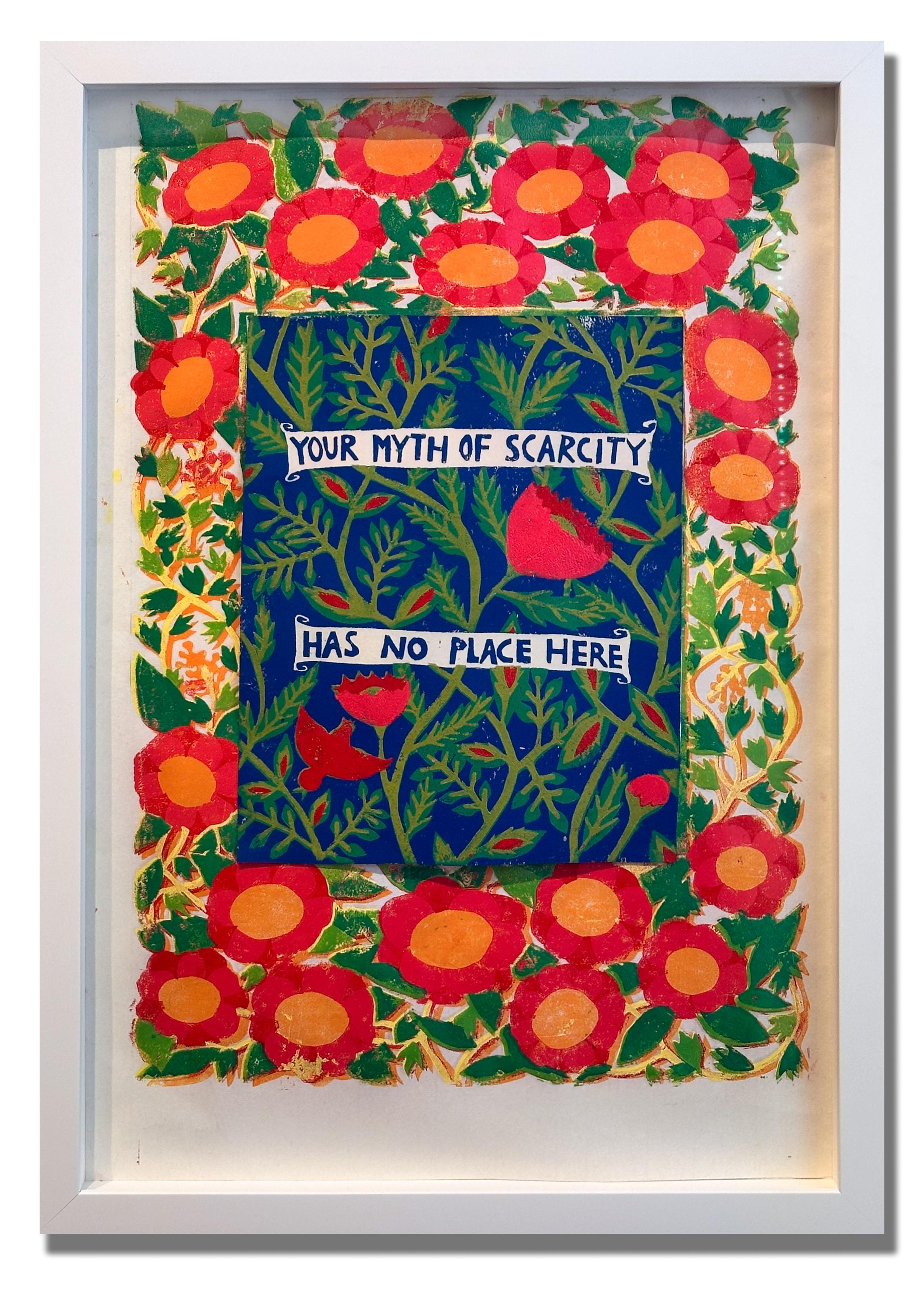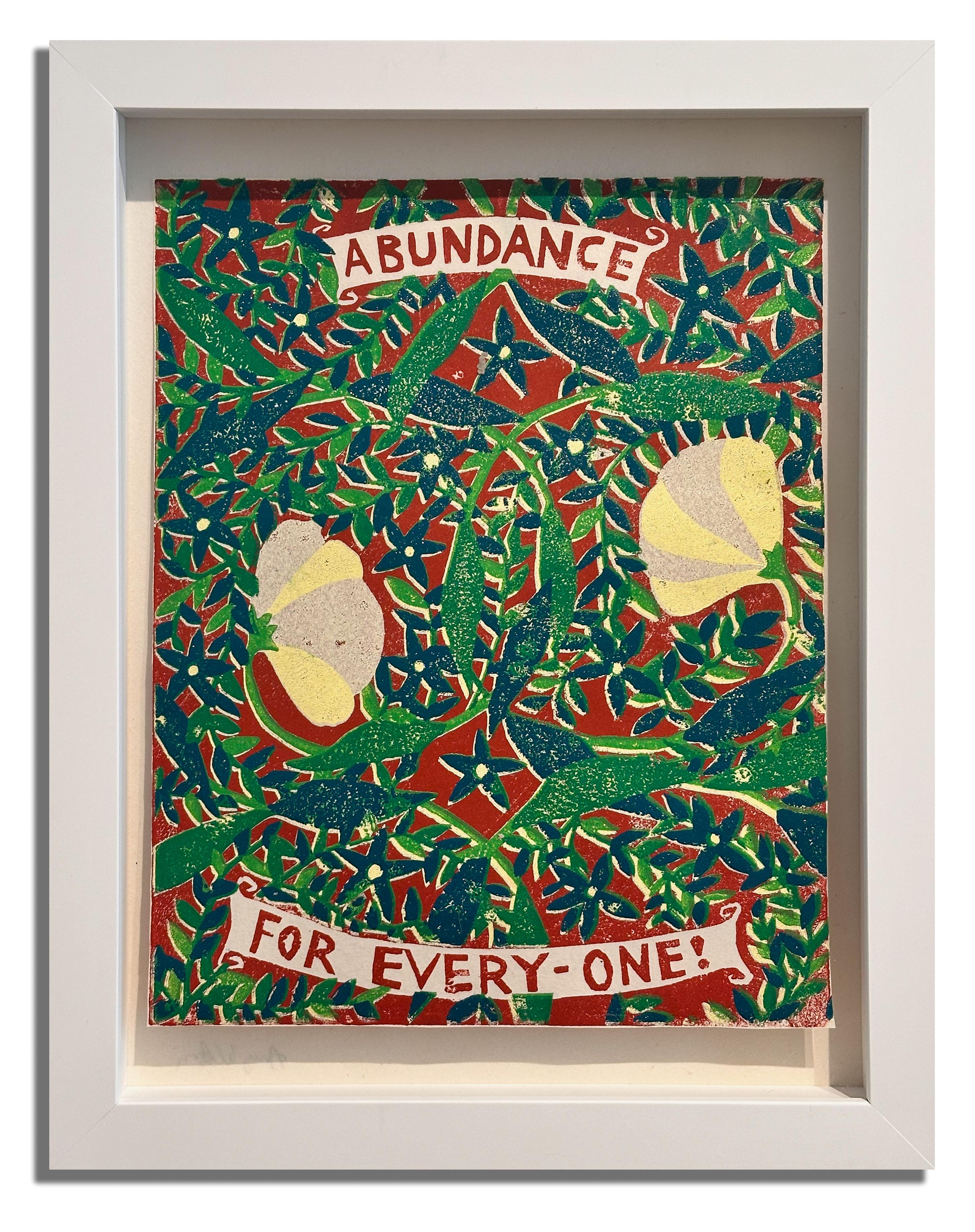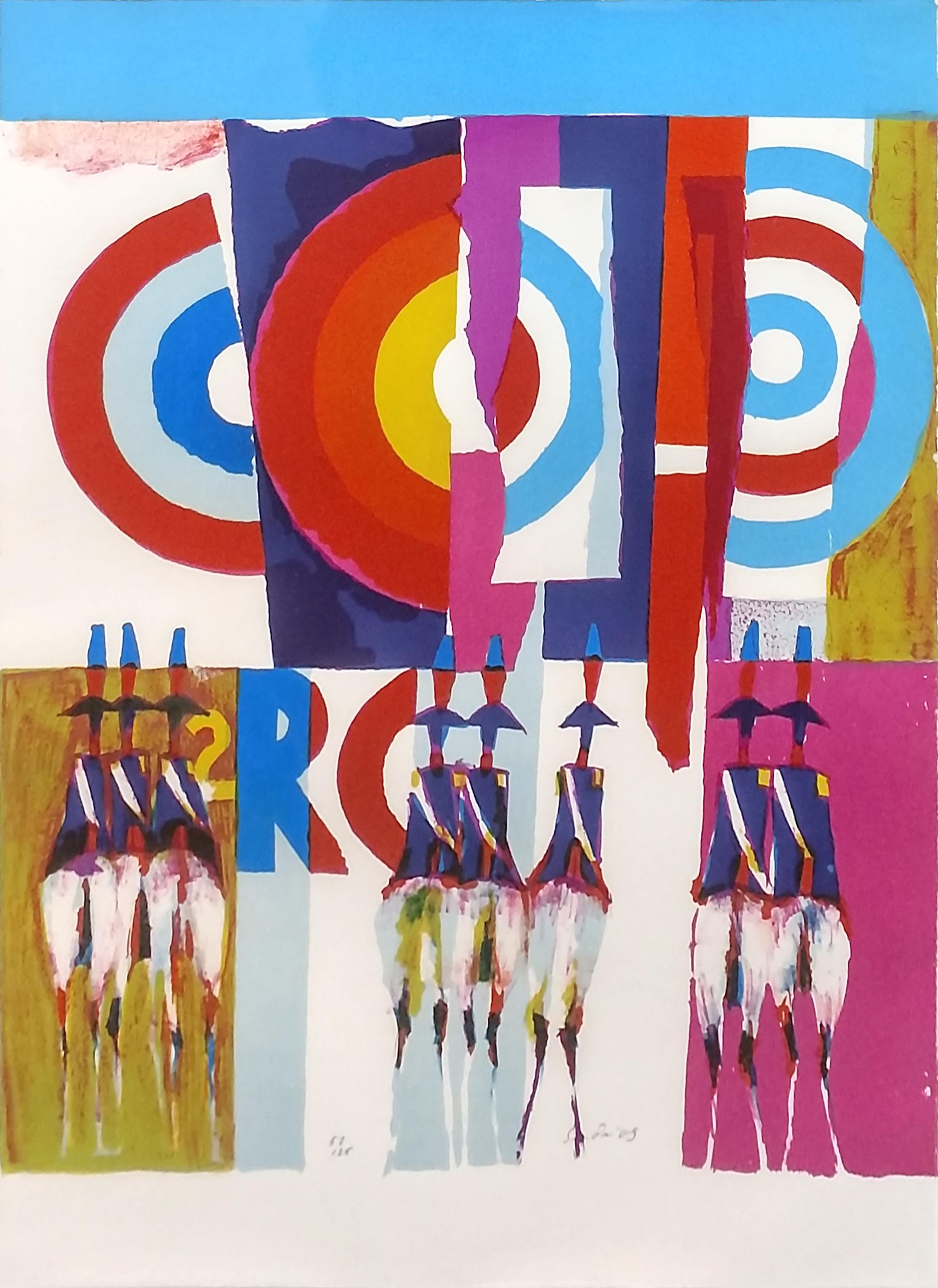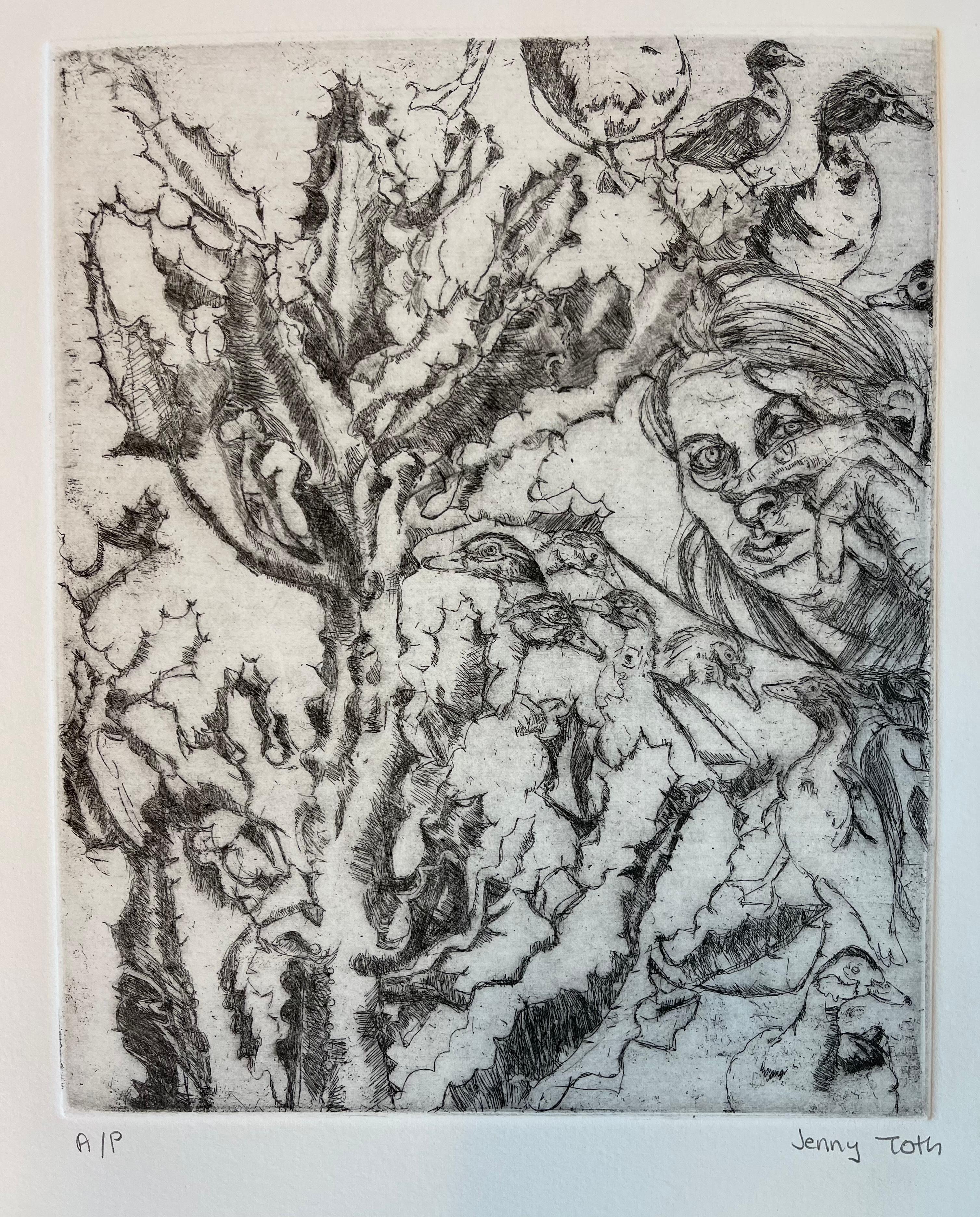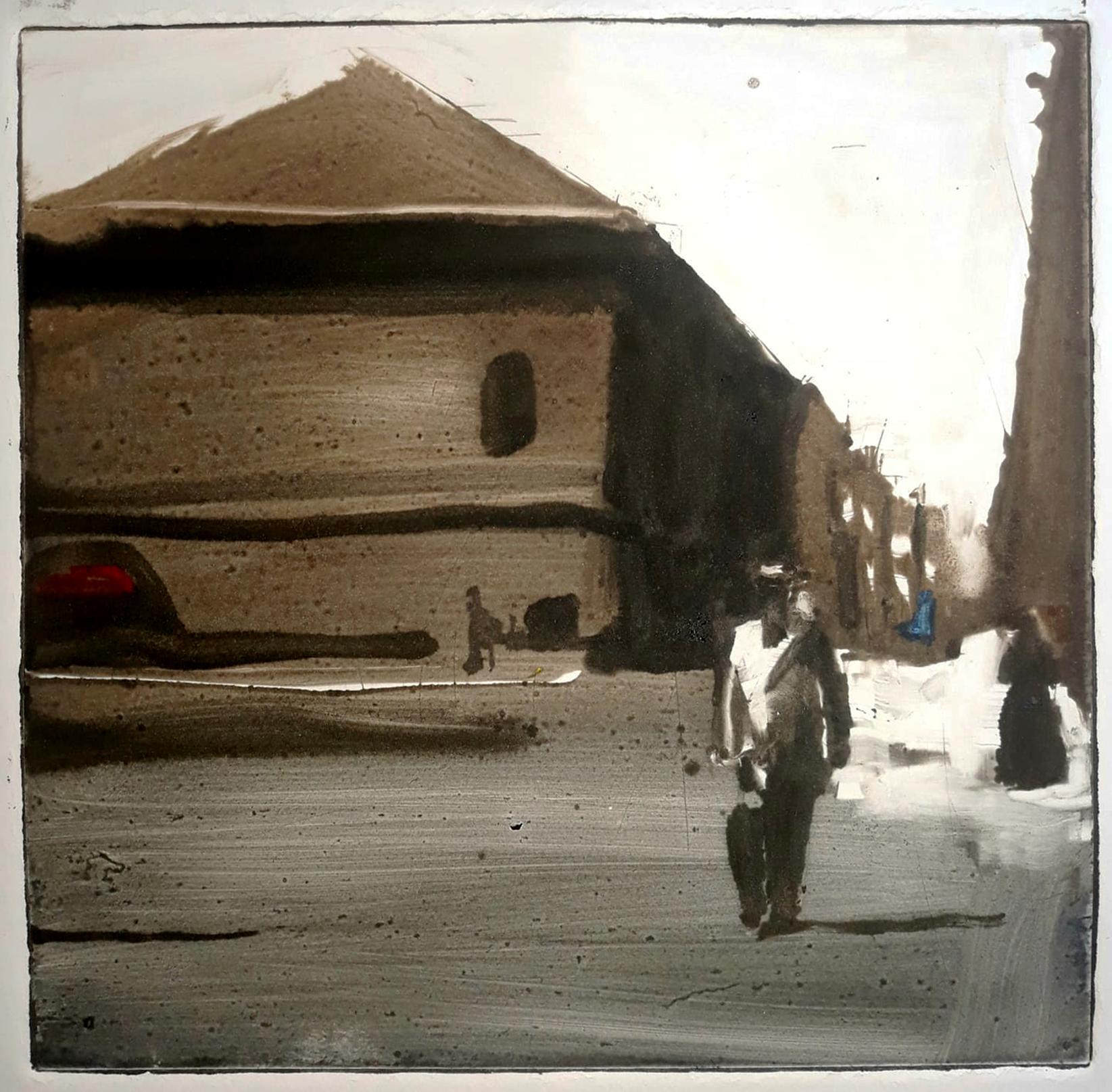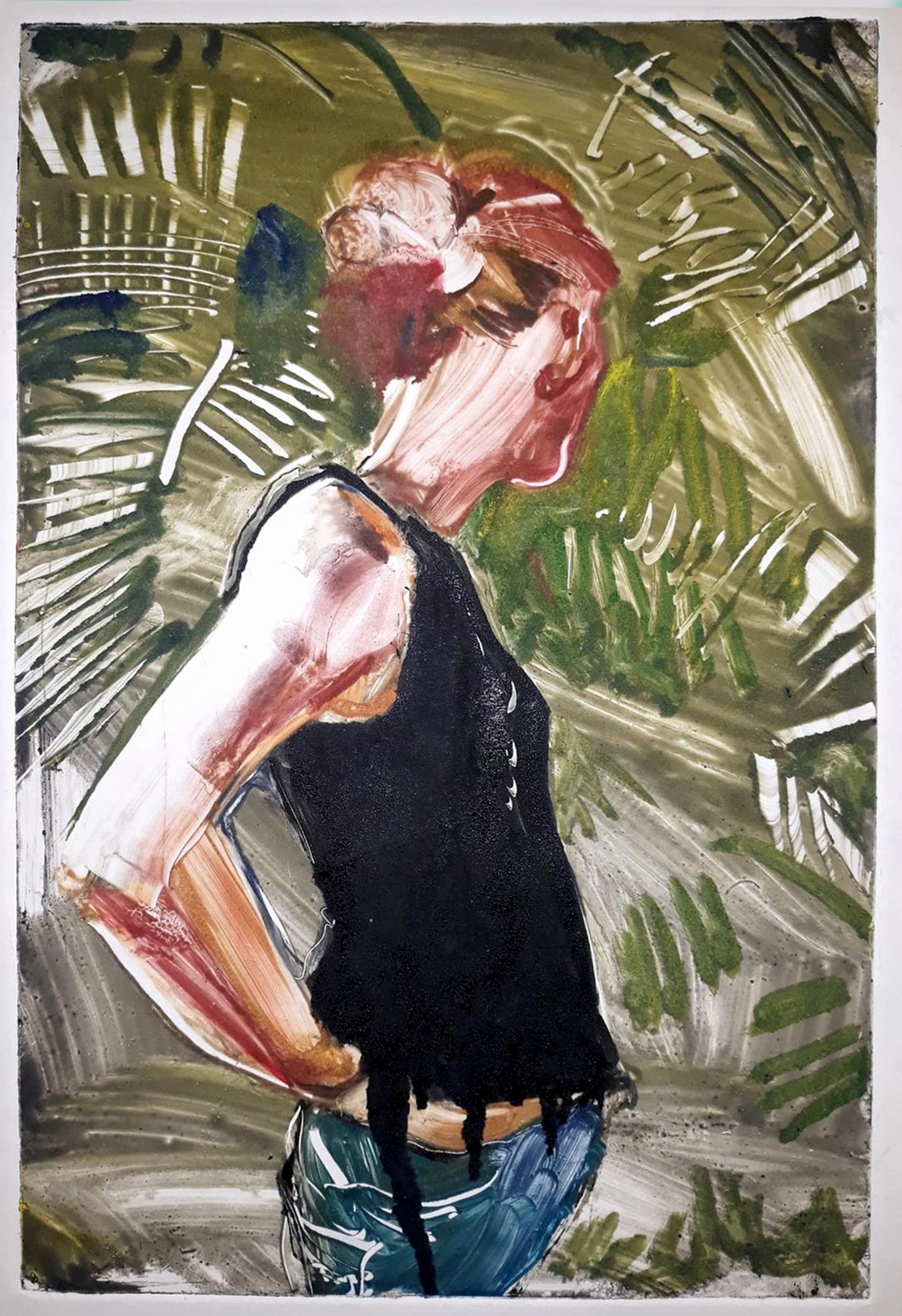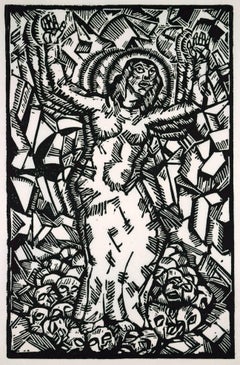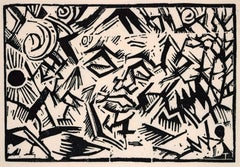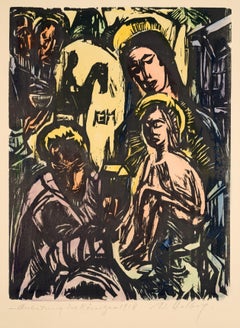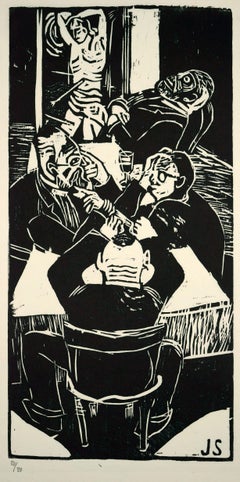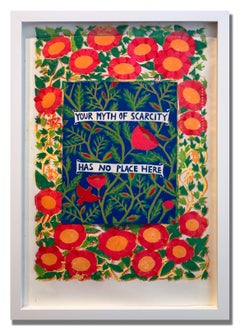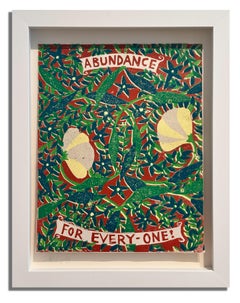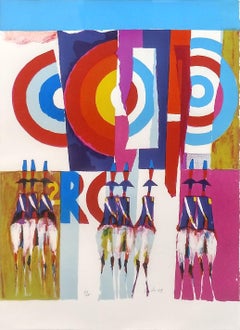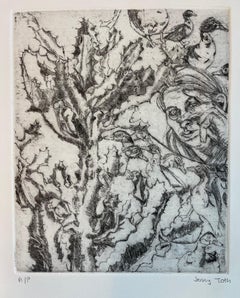Items Similar to Portrait of a Man / - Lost in Black -
Want more images or videos?
Request additional images or videos from the seller
1 of 7
Josef ScharlPortrait of a Man / - Lost in Black -1964
1964
$410.55
£305.50
€350
CA$560.98
A$632.42
CHF 335.20
MX$7,796.75
NOK 4,074.78
SEK 3,916.51
DKK 2,662.61
Shipping
Retrieving quote...The 1stDibs Promise:
Authenticity Guarantee,
Money-Back Guarantee,
24-Hour Cancellation
About the Item
Josef Scharl (1896 Munich - 1954 New York), Portrait of a Man, 1937 (1964), Bronner 43 A. Woodcut on Japanese paper, 44 cm x 30.5 cm (image), 63 cm x 46.5 cm (sheet size), signed “J[osef] Scharl” lower left in the printing block, inscribed below in lead as copy no. 3 / 40 and with Joseph Scharl's estate stamp on the reverse. This is a reprint from the original printing block made by Galerie Nierendorf in 1964.
- slight creases in the left corners and mounting residue on the reverse, otherwise in excellent, fresh condition
- Lost in Black -
Josef Scharl created this portrait of a man in 1937, one year before he emigrated to the United States. The large-format woodcut has a deep black background that merges with the sitter's bust. His face, too, is crisscrossed with black areas, and his eyes look at the viewer with a sad, resigned expression. Our slight view from above means that the sitter does not define the space. He seems to be lost in the dark, while the bright area next to his head and the light areas of his face make the darkness seem even more intense. Josef Scharl painted this portrait shortly before he was forced to leave Germany, which is why it can also be described as a self-portrait.
About the artist
In addition to training as a decorative painter, which he began in 1910, Josef Scharl attended evening classes in nude painting. After his military service from 1915 to 1918, he studied at the Munich Art Academy from 1919 to 1921 under Angelo Jank and Heinrich von Zügel. However, he turned his back on the academy and joined the Munich New Secession in 1923 and the artists' association 'Die Juryfreien' in 1929. During these years Scharl became a recognized artist, which was reflected in the awarding of the Dürer Prize of the City of Nuremberg (1929), the Rome Prize of the Berlin Academy of Art (1930), the Prize of the Munich Academy (1931), and the Förderpreis of the City of Essen (1932). The Rome Prize enabled him to spend extended periods in Rome and Paris from 1930 to 1932. As a member of the Deutscher Künstlerbund, he participated in its annual exhibitions from 1930 to 1936.
After the National Socialists seized power, Scharl's works were still shown in solo exhibitions at the renowned Neumann-Nierendorf Gallery in Berlin until 1935, but the artist was increasingly subjected to reprisals and emigrated to the USA via Switzerland without his family in 1938. He was motivated to do so by an invitation from the Museum of Modern Art to exhibit together with Max Beckmann, Georg Scholz, Erich Heckel and Karl Hofer.
In the USA, Scharl was supported by Albert Einstein, with whom he was on friendly terms and who wrote a memorial speech after the artist's death in 1954. In 1945, Karl Nierendorf published Scharl's first American monograph and presented his drawings in his New York gallery. Through Wolfgang Sauerländer, the artist illustrated the fairy tales of the Brothers Grimm for the publisher ‘Pantheon Books’. The book, published in 1944, enjoyed great popularity and led to further follow-up commissions. Josef Scharls became a US citizen in 1952 and died two years later.
GERMAN VERSION
Josef Scharl (1896 München - 1954 New York), Porträt eines Mannes, 1937 (1964), Bronner 43 A. Holzschnitt auf Japanpapier, 44 cm x 30,5 cm (Darstellung), 63 cm x 46,5 cm (Blattgröße), unten links im Druckstock mit „J[osef] Scharl“ signiert, darunter in Blei als Exemplar Nr. 3/ 40 ausgewiesen und rückseitig mit Nachlassstempel von Joseph Scharl versehen. Es handelt sich um den 1964 von der Galerie Nierendorf angefertigten Nachdruck vom originalen Druckstock.
- an den linken Eckbereichen leichte Knickspuren und dort rückseitig Montagereste, ansonsten in ausgezeichnetem farbfrischem Zustand
- Im Schwarz verloren -
Das Porträt eines Mannes hat Josef Scharl 1937 geschaffen, ein Jahr bevor er in die USA emigrierte. Der großformatige Holzschnitt hat einen tiefschwarzen Fond, der in die Büste des Dargestellten übergeht. Auch das Gesicht ist von schwarzen Flächen durchzogen und die Augen in traurig-resigniertem Ausdruck auf den Betrachter gerichtet. Unser leichter Blick von oben bewirkt, dass der Dargestellte den Raum nicht bestimmt. Er wirkt wie im Dunklen verloren, wobei die helle Lichtfläche neben seinem Kopf und die hellen Flächen seines Gesichts die Dunkelheit umso intensiver hervortreten lassen. In dieses Porträt hat Josef Scharl seine eigene innere Gestimmtheit hineingelegt, kurz bevor er gezwungen war, Deutschland zu verlassen, weshalb es durchaus auch als Selbstporträt bezeichnet werden kann.
zum Künstler
Neben einer 1910 begonnenen Ausbildung zum Dekorationsmaler besuchte Josef Scharl Abendkurse für Aktmalerei. Nach dem von 1915 bis 1918 absolvierten Kriegsdienst studierte er von 1919 bis 1921 an der Münchener Kunstakademie bei Angelo Jank und Heinrich von Zügel. Er kehrte der Akademie allerdings den Rücken und schloss sich 1923 der Münchener Neuen Secession und 1929 der Künstlervereinigung ‚Die Juryfreien‘ an. In diesen Jahren wurde Scharl zuem anerkannten Künstler, was sich in der Verleihung des Dürerpreis der Stadt Nürnberg (1929), dem Rompreis der Berliner Kunstakademie (1930), dem Preis der Münchner Akademie (1931) und dem Förderpreis der Stadt Essen (1932) niederschlug. Der Rompreis ermöglichte ihm von 1930 bis 1932 längere Aufenthalte in Rom und Paris. Als Mitglied des Deutschen Künstlerbundes nahm er von 1930 bis 1936 an den Jahresausstellungen teil.
Nach der Machtergreifung der Nationalsozialisten fanden zwar bis 1935 noch Einzelausstellungen von Scharls Werken in der renommierten Berliner Galerie Neumann-Nierendorf statt, doch sah sich der Künstler zusehends Repressalien ausgesetzt, so dass er 1938 ohne seine Familien über die Schweiz in die USA emigrierte. Dazu motivierte ihn eine Einladung des Museum of Modern Art gemeinsam mit Max Beckmann, Georg Scholz, Erich Heckel und Karl Hofer auszustellen.
In den USA wurde Scharl von Albert Einstein unterstützt, mit dem er freundschaftlich verbunden war und der nach dem Tod des Künstlers 1954 eine Gedenkrede verfasste. 1945 publizierte Karl Nierendorf die erste amerikanische Monographie Scharls und präsentierte dessen Zeichnungen in seiner New Yorker Galerie. Durch Vermittlung Wolfgang Sauerländers illustrierte der Künstler für den Verlag ‚Pantheon Books‘ die Märchen der Brüder Grimm. Das 1944 erschienene Buch erfreute sich großer Beliebtheit und führte zu weiteren Folgeaufträgen. 1952 wurde Josef Scharls US-Amerikanischer Staatsbürger und verstarb zwei Jahre später.
- Creator:Josef Scharl (1896 - 1954, American, German)
- Creation Year:1964
- Dimensions:Height: 24.81 in (63 cm)Width: 18.12 in (46 cm)Depth: 0.4 in (1 cm)
- Medium:
- Movement & Style:
- Period:
- Condition:
- Gallery Location:Berlin, DE
- Reference Number:1stDibs: LU2438216126652

About the Seller
5.0
Gold Seller
Premium sellers maintaining a 4.3+ rating and 24-hour response times
Established in 2014
1stDibs seller since 2023
19 sales on 1stDibs
Typical response time: 6 hours
- ShippingRetrieving quote...Shipping from: Berlin, Germany
- Return Policy
Authenticity Guarantee
In the unlikely event there’s an issue with an item’s authenticity, contact us within 1 year for a full refund. DetailsMoney-Back Guarantee
If your item is not as described, is damaged in transit, or does not arrive, contact us within 7 days for a full refund. Details24-Hour Cancellation
You have a 24-hour grace period in which to reconsider your purchase, with no questions asked.Vetted Professional Sellers
Our world-class sellers must adhere to strict standards for service and quality, maintaining the integrity of our listings.Price-Match Guarantee
If you find that a seller listed the same item for a lower price elsewhere, we’ll match it.Trusted Global Delivery
Our best-in-class carrier network provides specialized shipping options worldwide, including custom delivery.More From This Seller
View AllThe Mother / - Violated Motherhood -
By Georg Tappert
Located in Berlin, DE
Georg Tappert (1880 Berlin - 1957 Berlin), The Mother, 1918 (1964). Estate print from 1964. Linocut on Japan, 31.5 cm x 20 cm (image), 44.5 cm x 28 cm (sheet size), marked lower left...
Category
1910s Expressionist Figurative Prints
Materials
Paper
Head / - Mental thunderstorm of war -
By Georg Tappert
Located in Berlin, DE
Georg Tappert (1880 Berlin - 1957 Berlin), Head, 1918 (1964). Wietek 110. Estate print from 1964. Linocut on Japan, 17 cm x 24.5 cm (depiction), 24 cm x 31.5 cm (sheet size), marked ...
Category
1910s Expressionist Figurative Prints
Materials
Paper
Adoration of the Magi / - The Rider of the Sun -
Located in Berlin, DE
Walter Helbig (1878 Falkenstein - 1968 Ascona), Adoration of the Magi, 1918. Hand-colored linocut, 30 cm x 22.5 cm (depiction), 50 cm x 35 cm (sheet size), signed “W.[alter] Helbig” in pencil lower right, inscribed “Adoration of the Magi” lower left and dated “1918”. Below this a handwritten dedication “with heartfelt Christmas greetings”.
- Paper somewhat darkened and with slight creases, thumbtack holes in the corners
- The Rider of the Sun -
The 'apocalypse' of World War I brought about a return to sacred art. Walter Helbig belonged to the circle of the 'Brücke' and the 'Blauer Reiter'. With his reinterpretation of religious themes in an expressionist formal language, Helbig shaped an avant-garde neo-sacred art. This is symbolically expressed in the silhouette of the rider against the sun-like yellow background. It refers to the awakening initiated by the Blue Riding, which is now linked back to the sacred.
The rider and horse "look" at Mary and the Christ Child, who occupy the entire field. Opposite them are the three kings, the eldest of whom kneels before Christ and offers him a gold-filled casket. The expressionist lines give rise to a tower that rises into the "sun", so that the gift has become a Gothic church, expressing the hope that the fallen world will be resurrected in the name of Christ. This dimension of meaning is emphasized by the magical effect of the color scheme.
About the artist
In 1895, Walter Helbig began studying at the Dresden Academy of Art, where he became friends with the future Brücke artist Otto Müller, with whom he lived in Dresden from 1903 to 1905. While studying in Italy from 1897 to 1899, he met Arnold Böcklin and Adolf von Hildebrand. After completing his studies, he first worked for Otto Gussmann, painting churches. From 1905 to 1909 he worked as a freelance painter in Hamburg. In 1909, through the mediation of Otto Müller, Helbig made the acquaintance of artists from the 'Brücke'. In 1910 he exhibited at the founding exhibition of the Berlin 'Neue Sezession'. In the same year, he moved to Switzerland, where, together with Hans Arp and Oscar Lüthy, he founded the 'Moderne Bund' in Weggis, to which Cuno Amiet and Giovanni Giacometti also belonged. At the second exhibition of the 'Moderne Bund' in Zurich in 1911, Henri Matisse and Robert Delaunay were represented alongside artists from the 'Blauer Reiter'. In 1913, Helbig traveled to Paris with Arp and Lüthy. After the dissolution of the 'Moderne Bund', Helbig was represented at the first Dada exhibition in Zurich in 1914. In 1919, he joined the Berlin 'Novembergruppe'. After the devastation of World War I, Helbig turned increasingly to religious themes in his work. In 1924, like many other artists of his time, he moved to Ascona for financial reasons, where he became a naturalized citizen in 1938. There he founded the artists' association "The Great Bear", to which Marianne von Werefkin...
Category
1910s Expressionist Figurative Prints
Materials
Paper
Mockery / - Desk Perpetrators -
By Josef Scharl
Located in Berlin, DE
Josef Scharl (1896 Munich - 1954 New York), Mockery, 1935 (1964), Bronner 30 A. Woodcut on Japanese paper, 51.8 x 25.7 cm (image), 65 cm x 37 cm (sheet size), signed lower right in t...
Category
1930s Expressionist Figurative Prints
Materials
Paper
Rudolf v. Rittner as Florian Geyer - Last man standing -
By Lovis Corinth
Located in Berlin, DE
Lovis Corinth (1858 Tapiau - 1925 Zandvoort), Rudolf von Rittner as Florian Geyer, 1924 (Müller 854), drypoint signed in pencil. 20.4 × 14.2 (plate size), 37.7 × 30.6 cm (sheet size). Published by Karl Nierendorf, Berlin. Framed in a passepartout.
- Strong, precise impression. Frame a little bit rubbed and with two small damages.
About the artwork
The knight is a leitmotif in Lovis Corinth's work, culminating in his Self-Portrait in Armour of 1914. Of all the paintings on this theme, Corinth most often depicted Florian Geyer. Descended from a Franconian noble family, he fought for the freedom of the peasants during the peasant wars of the Reformation, first diplomatically and then militarily, leading the legendary Schwarzen Haufen (Black Troops). The name derives from the black uniforms with which Geyer dressed the peasants willing to fight.
During the Napoleonic occupation, the freedom fighter Florian Geyer was sung about by the Romantics, and the free corps Die Schwarze Schaar, founded in 1813 by Major von Lützow, succeeded the Schwarzer Haufen. It was against this historical background that Gerhard Hauptmann wrote the revolutionary drama Florian Geyer, which premiered at the Deutsches Theater in Berlin in 1896. While the actor Rudolf Rittner, who would later appear in Fritz Lang's films, initially played the role of Schäferhans, he took over the leading role in the new production at Berlin's Lessing Theatre in 1904, again directed by Emil Lessing, which established his fame as an actor. Hauptmann himself praised the acting. He wrote to Hugo von Hofmannsthal: "It went quite well with Florian Geyer. In any case, I had the great pleasure of seeing the play again in an admirable performance". And Lovis Corinth was so taken with Rittner's performance that he painted an oil portrait of him in the role of Florian Geyer in 1906.
After two further graphic versions in 1915 and 1920/21, Corinth returned to the painting a year before his death and almost twenty years after the oil painting to create this graphic version in 1924. Even the inscription in the picture was taken over. This proves all the more the importance of the knight and freedom fighter for Corinth's self-image.
The oil painting, in particular, proclaims the single-minded determination to fight to the last for the values defended, manifested in the oil painting by the tattered flag held out to the enemy. There is a parallel with Rainer Maria Rilke's 1899 story The Cornet, in which the protagonist goes down with the flag that he first saved at the risk of his life.
Consequently, the portrait is also a self-portrait, and the knight's armour is not an academic costume or an ironic refraction, but an expression of Corinth's self-image, which also includes his self-representation as an artist. The Secession poster...
Category
1920s Expressionist Figurative Prints
Materials
Etching
$891 Sale Price
20% Off
Wilhelm Leibl (1844-1900), Original Etchings, Kunstverlag Gurlitt, 1900
Located in Berlin, DE
Wilhelm Leibl (1844 Cologne - 1900 Würzburg), Linen portfolio by Kunstverlag Gurlitt with 11 (of 11) original etchings, 1900, copy no. 67 / 100, 49.8 cm x 32 cm (portfolio size), 43....
Category
Early 1900s Realist Figurative Prints
Materials
Paper
You May Also Like
Your Myth of Scarcity
By Amy Wilson
Located in Red Bank, NJ
I am a multi-disciplinary artist who has professionally shown my work in dozens of galleries and museums since the late 1990s. But while my work can take many different forms, my practice is rooted in drawing. Whether I am working on the watercolor and acrylic pieces, or fiber-based pieces, every project and every idea begins with a drawing. Through that process I lay out my ideas, ask myself questions, experiment with different options, and try to resolve all the formal and conceptual issues I will attempt in my final piece.
The themes I have explored in my work from 1999 on, and even before then, have remained the same even though my style has shifted radically. I have been interested in exploring self-portraiture, personal narratives, femininity, politics, and the use of text in art. I have remained constant in my exploration of critical theory and art history, and drawn influence from artists as diverse as Joseph Beuys, Henry Darger, and Adrian Piper.
Category
20th Century Expressionist Figurative Prints
Materials
Textile, Ink, Archival Paper
Abundance for Everyone
By Amy Wilson
Located in Red Bank, NJ
I am a multi-disciplinary artist who has professionally shown my work in dozens of galleries and museums since the late 1990s. But while my work can take many different forms, my practice is rooted in drawing. Whether I am working on the watercolor and acrylic pieces, or fiber-based pieces, every project and every idea begins with a drawing. Through that process I lay out my ideas, ask myself questions, experiment with different options, and try to resolve all the formal and conceptual issues I will attempt in my final piece.
The themes I have explored in my work from 1999 on, and even before then, have remained the same even though my style has shifted radically. I have been interested in exploring self-portraiture, personal narratives, femininity, politics, and the use of text in art. I have remained constant in my exploration of critical theory and art history, and drawn influence from artists as diverse as Joseph Beuys, Henry Darger, and Adrian Piper.
Category
20th Century Expressionist Figurative Prints
Materials
Textile, Ink, Archival Paper
CARABINIERI A OSTIA
By Nicola Simbari
Located in Aventura, FL
Serigraph on paper. Hand signed and numbered by the artist. Artwork size 27.5 x 19.5 inches. Frame size approx 32 x 24 inches. Artwork is in excellent condition. Edition of 125. C...
Category
1990s Expressionist Abstract Prints
Materials
Paper, Screen
$682 Sale Price
30% Off
Ducks Quacking, Cactus Peeking, linear style, monochromatic
By Jenny Toth
Located in Brooklyn, NY
This is an artist proof aquatint of a woman peeking around a cactus with ducks mysteriously hovering in the upper right corner and a giant beautiful cactus overgrowing. The mood is ...
Category
2010s Expressionist Figurative Prints
Materials
Paper, Ink, Archival Ink, Aquatint
Ghosts of New York 5, mysterious, monochromatic cityscape
By Tom Bennett
Located in Brooklyn, NY
One of a series of oil based monotypes on fine printmaking paper, subtle color design, symbolic and atmospheric figure/figures in cityscape
Category
2010s Expressionist Landscape Prints
Materials
Monotype, Archival Paper
Waiting for Buddha, expressionistic female figure, greens, earth tones
By Tom Bennett
Located in Brooklyn, NY
An oil-based ink monotype of an expressive figure turned from the viewer against a patterned green-grey background.
Category
2010s Expressionist Figurative Prints
Materials
Monotype, Archival Paper
